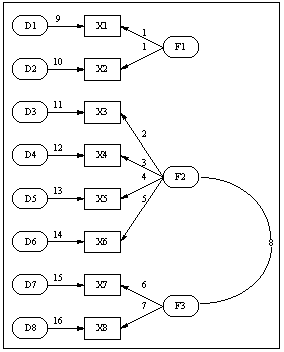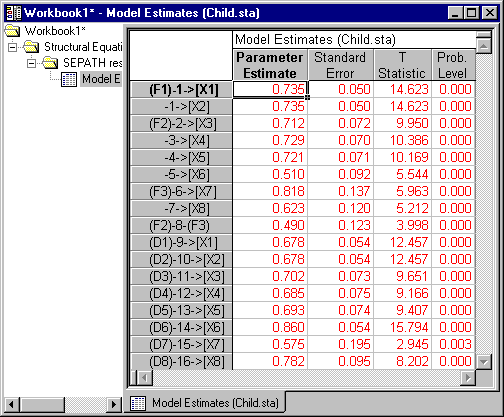Example 3: Confirmatory Factor Analysis with Identifying Constraints
Everitt (1984, pages 45-52) discusses in considerable detail a confirmatory factor analysis of a data set in Child (1970). This factor model is similar in some ways to the Lawley-Maxwell example. However, in this case one factor loads on only two manifest variables. This pattern, unfortunately, leads to a model that is not identified, unless some identifying constraints are applied. In this model, two factor loadings are constrained to be equal to each other, and two factor covariances are constrained to be zero. Data for this example are in the Child.sta data file.

The PATH1 specification for this model is contained in the file Child.cmd.

The path diagram corresponding to these commands is shown below.
Everitt's analysis of this example is incorrect, because a correlation matrix was treated as if it was a covariance matrix. You can reproduce Everitt's incorrect results by specifying Covariances as the Data to Analyze in the Analysis Parameters dialog.

Correct results (shown below) can be obtained by specifying Correlations as the Data to Analyze.

See also, SEPATH Analysis - AutoIndex.
